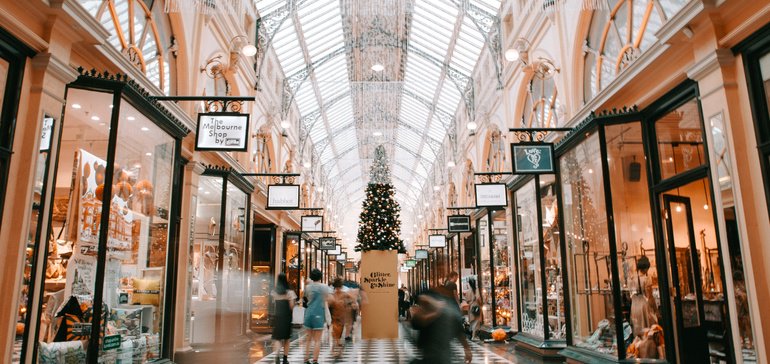Dive Brief:
- The National Retail Federation on Monday boosted its retail forecast for 2018, saying it now expects sales to rise a minimum of 4.5% over last year, up from the 3.8% to 4.4% range forecast earlier this year. (The numbers exclude automobiles, gasoline stations and restaurants, according to a press release emailed to Retail Dive.)
- Retail sales in the first half of 2018 grew 4.8% year over year and have been up 4.4% in the most recent three-month moving average, according to the report. NRF now expects gross domestic product for the year to grow at the higher end of the 2.5% to 3% range it forecast earlier, thanks to higher wages, gains in disposable income, a strong job market and record-high household net worth.
- But the organization also warned that tariffs could upend that progress. Tariffs of 25% on $34 billion in Chinese goods took effect in July, and tariffs on another $16 billion are scheduled to take effect this month. Another round on $200 billion in goods would include a broader array of consumer items and is expected to be finalized in September. Imports, meanwhile, have been at record levels this summer as retailers buy merchandise before tariffs can take effect, according to NRF’s Global Port Tracker report.
Dive Insight:
Retail is doing well thanks to a strong U.S. economy, though it’s not gaining as much as other industries. Pure retail’s share of all retail spending fell to its lowest proportion in over four years, according to research from GlobalData Retail emailed to Retail Dive. That makes it all the more vulnerable to tariffs, especially considering the high rate of imports in the sector.
“We knew this would be a good year, but the first half turned out to be even better than expected. However, a tremendous amount of uncertainty about the second half remains,” NRF President and CEO Matthew Shay said in a statement. “It could be a banner year for the industry, or we could keep chugging along at the current rate. We don’t want to see these economic gains derailed by protectionist trade policy.”
Retailers are expediting their import operations ahead of tariff deadlines, and an immediate impact on prices on consumer goods is unlikely, he also said. But that won’t last for long, Shay warned. “And just the mere talk of tariffs negatively impacts consumer and business confidence, leading to a decline in spending. It’s time to replace tariffs and talk of trade wars with diplomacy and policies that strengthen recent gains, not kill them.”
Moody’s Investors Service last week similarly warned that “tough tariff talk” could “rattle” the industry. Tariffs would be a credit negative for furniture and home goods, auto dealers, and apparel and footwear retailers, according to Moody’s Retail Analyst Mike Zuccaro. Apparel and footwear retailers “could experience gross margin pressures for 12 to 24 months if tariffs are imposed,” he said.
And tariffs may not be the only source of trouble. Rising gas prices could hit consumer spending, according to GlobalData Managing Director Neil Saunders, who also warned that consumers continue to budget more for experiences than for accumulating things, making it imperative that retailers offer compelling shopping experiences.

